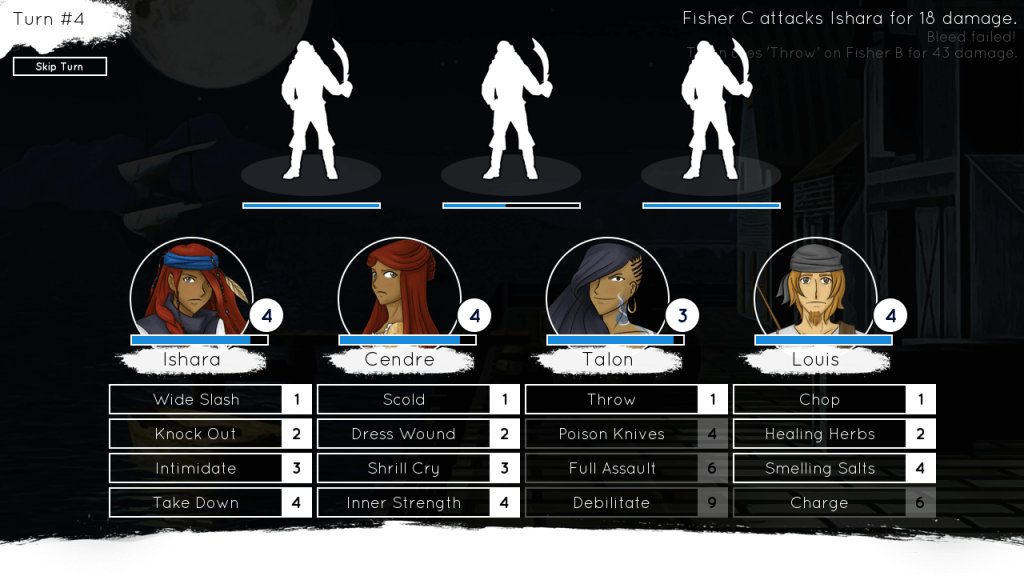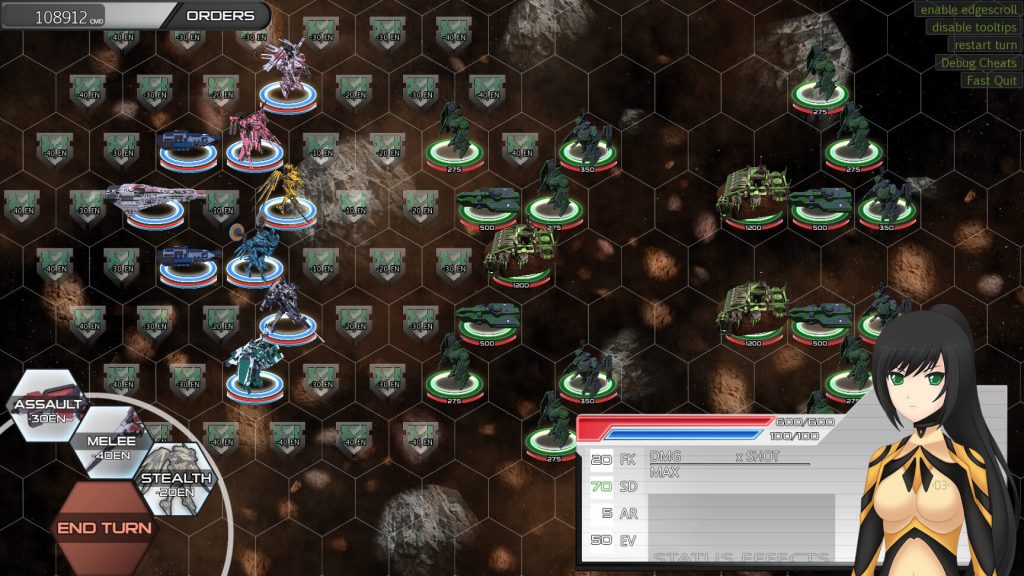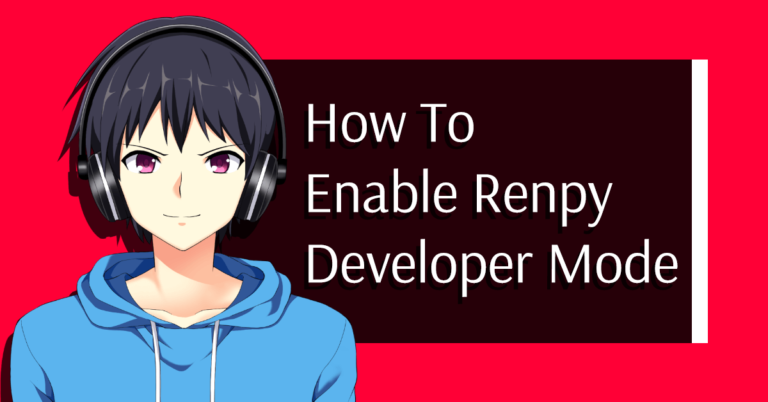Yes, you can make an RPG with Renpy game engine.
As for most role-playing games, you can easily display your 2D characters with background, text, and music.
Depending on your expectations, you may learn Python to add your own features scripts.
Still, all standard features can be built with Ren’py.
This article will introduce you to all possibilities you can make with Renpy to build your own RPG.
Ok then, let’s get started!
9 RPG Battle Mechanics You Can Implement Into a Renpy Game
Battle System
A battle system is an essential part of an RPG.
The most straightforward combat system can be done with a few lines of code by using the native Ren’py in-game menu function with some choices.
To start with, you’ll probably have to define what actions are possible during a battle phase.
The most common combat options are:
- Attack
- Skills or specials
- Defend or guard
- Item
- Escape
By introducing these elements into your own video game, you could already have some excellent role-playing game elements with a basic battle system.
Of course, there are way more advanced combat systems that could depend on many more features.

You could build your custom framework with character statistics, parties, hit success, status, or map advantage for specific factions.
I personally like to have some random elements and unknown factors in the battle phase, so it’s really up to you what you want to establish in yours.
Party
We also often see a party management system in RPGs.
This can be done in Ren’py with a bit of learning, as you’ll probably have to understand precisely how variables, parameters, and lists work.
To create a heroes party, you’ll need to define your heroes’ characteristics and standards for each one.
The most familiar characters traits in role-playing games are the following:
- Names
- Background
- Classe
- Images
- Statistics
Once you have all these, it’s straightforward to make your game display the party on the screen.
In addition, you’ll also want to make sure each character has their own combat sprite and dialogue box to make your game really special.
Enemies
Adding enemies to your RPG is an important task that can make or break the game.
One way to make sure you have a wide variety of enemies is to generate them procedurally.
It means that you’ll not need to hard code each enemy, but you’ll instead just have to create a system that will make each new enemy different from the last.
This could be done, for instance, by using a random number generator to choose what kind of enemy it will be, what abilities it has, and so on.

Alternatively, you could also create static enemies that are always the same but with different stats and appearances.
In both cases, you’ll want to make sure they are correctly integrated into your game so that they feel like a natural part of the world.
Items
You’ll probably want to make a system of items with an inventory.
There are many possibilities to set up your items, but in most role-playing games, you can find different sub-types like:
- consumables (time-limited, immediate effect…)
- equipable (weapons, armors, shields, rods, daggers, and so on)
- stats
- quest related
- unique
You could build a simple inventory system from scratch and make a screen to allow the player to change equipment, use consumables, or even drop items.
In that way, players could use it any time to see what they have equipped and equip new stuff as the adventure goes on.
Your best bet to start with is to know about how Python lists and arrays work.
Quests
Quests are essential to make the player feel engaged in a playthrough.
Generally speaking, a quest is a task or set of duties that the player must complete to progress in the story or get special rewards.
To establish such a system, you’ll first need to create a quest entity that will hold all the information.
Of course, you could also do all of this using only Python with a list or array functions to achieve the same result.
This entity should have at least the following:
- name
- objective
- starting point
- one or several rewards
Once you have this, it’s easy to make a function that will give the player the quest and add it to your game.
This function will also need to keep track of all active quests so that the player can’t get more than one quest at a time.
Map Navigation
One other aspect of RPGs that gamers often enjoy is exploring maps.
It can only specify areas like exploring cities, dungeon maps, or even a world map.

This can be easily done in Ren’py with a few lines of code.
To start with, you’ll want to create a map object.
This will be a two-dimensional list where each item corresponds to a square on the map.
With Renpy, you can do this easily with the image map function.
Another way to process (and my personal recommendation) is the possibility to use native image button functions.
All you have to do is to define a background image that could represent a scene, then your image button at the expected location on your map.
You can then use this map to easily determine what tiles are visible from any given position, what is currently being displayed on the screen, and so on.
I learned to use Renpy with a preference for image buttons instead of image maps, but it’s a personal preference that suits my needs.
There are no better options than the other.
Both options will help you build your own map-based navigation system.
Level-Up and Experience System
In RPGs, most characters level up as they make their way through the quests or by farming combats.
This allows them to make stronger attacks or use different spells depending on their class or jobs.
Ren’py provides a kind of “achievement system” that allows you to make events happen during key points of your game.
For example, when a player does something instead of waiting for it to be done, an event will trigger right after this action is completed.
It can make leveling up much easier because all you’ll have to do is make the code execute one function when specific achievements are triggered.
You could also make it so that each time a character levels up, he gets access to new abilities in fights, depending on his class.
This could be done, for example, by adding a list of available abilities to the class and then choosing one at random each time the character levels up.
You’ll have to know a bit about how you can manage persistent data on Renpy to accomplish that.
But as soon as you understand how it works, you can do so many combinations of possibilities!
So it’s up to you to choose how you want to implement your level-up system.
Races and Factions
It’s not uncommon to find races and factions that the player can join.
This is particularly the case in medieval fantasy role-playing games.
This can give players a sense of choice and feel more invested in the game.
Ren’py allows you to easily add these races and factions using the “persistent data” system.
This system lets you store data in variables saved between different playthroughs.
You can then use this data to determine, for example, which faction the player is part of, his race, etc.
All you’ll need to do is make sure that your script loads the appropriate persistent data when the game starts.
Romance Interests
One of the staples of RPGs is the ability to have romantic relationships with certain characters.
Ren’py makes this very easy to add as it’s a game engine built to make easy visual novels first.
A video game genre based on reading where it’s common to see the MC having relationships with other characters.
All you need is a sprite that represents each of your romantic interests.
Then you can use the jump and label functions to make the game display a particular scene when the player is in a relationship with that character.
You could also make it so that different actions lead to other scenes.
For example, giving gifts to a character might make her more likely to fall in love with the player.
It’s up to you to decide what kind of mechanics you want to use for your romance system.
So that’s it.
Building an RPG with Renpy game engine is possible and accessible to beginners.
You can explore many possibilities, and some of them are even native to this specific engine.
With a bit of creativity and some Python knowledge, you can make your game stand out from the rest by integrating advanced elements.
Just make sure that you take the time to plan everything out before starting to code so that you don’t run into any problems down the road.
RPG is one of the more complex game styles to build from scratch, so be sure to know what kind of project you’re starting.
For a more straightforward solution to start with, you could also consider using RPG Maker for your RPG.
Feel free to share it with others who might enjoy it if you liked this article!
Thanks for reading!







